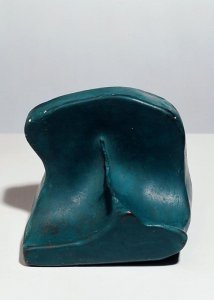Decostruire la somiglianza: il carattere mimetofobico del calco anatomico
Abstract
In the last decade, the aesthetic and historical-artistic principles of the imprint have been theoretically defined by visual arts. Georges Didi-Huberman’s essay La ressemblance par contact: archéologie, anachronisme et modernité de l'empreinte opened a debate on a contradictory theme, sometimes censured, about the elusive relation between original and replica, reality and reproduction. The concept of imprint solicits the implosion of the Vasarian and Greenberghian notion of 'originality' and 'authorship', fostering the outlining of an anachronistic approach (Warburg 1902; Benjamin 2012; Didi-Huberman 2009), in which the technical dexterity is subjected to the material action (Simondon 1969).
The excessive similarity between the cast and its referring, beyond its mechanical creation, is one of the charges traditionally pointed towards the mould. The phobias connected to that affinity prove to be ancient and various. Indeed, they concern the connection between corporal images and the concept of embodiment/death (Belting 2018; Bredekamp 2015), the disturbing indexicality of portrait and fragments which emulate the skin (Schlosser 1911), the deadly and erotic tension propagated by anatomical plaster casts (Gautier 1847; Bucci 1976; Didi-Huberman 2009).
This paper aims to analyse the mimetophobic quality of anatomical mould in the period between the second half of the 1950s and the early 1970s, stressing its crucial role in deconstructing the notion of similarity and re-examining the modernist Greenberghian theoretical system (Greenberg 2011). Starting from the assumption that the concept of similarity could not be considered unambiguous, this study will examine: i) the concept of similarity in its peculiar meaning of mimeto-phobia and mimeto-philia; ii) a possible reflection on Didi-Huberman's most original themes; iii) the value of mimesis concept inside the modernist episteme (Del Puppo 2013; Deleuze 2008). The core of the dissertation will present a selection of work that highlights the innovative quality of the mimetophobic element, ending with a monographical analysis on the ambivalent character of anatomical mould in Alina Szapocznikow (Filipovic 2011; Sylos Calò 2016; Butler 2011).

Downloads
Pubblicato
Come citare
Fascicolo
Sezione
Licenza
Copyright (c) 2023 Elephant & Castle

TQuesto lavoro è fornito con la licenza Creative Commons Attribuzione 4.0 Internazionale.





